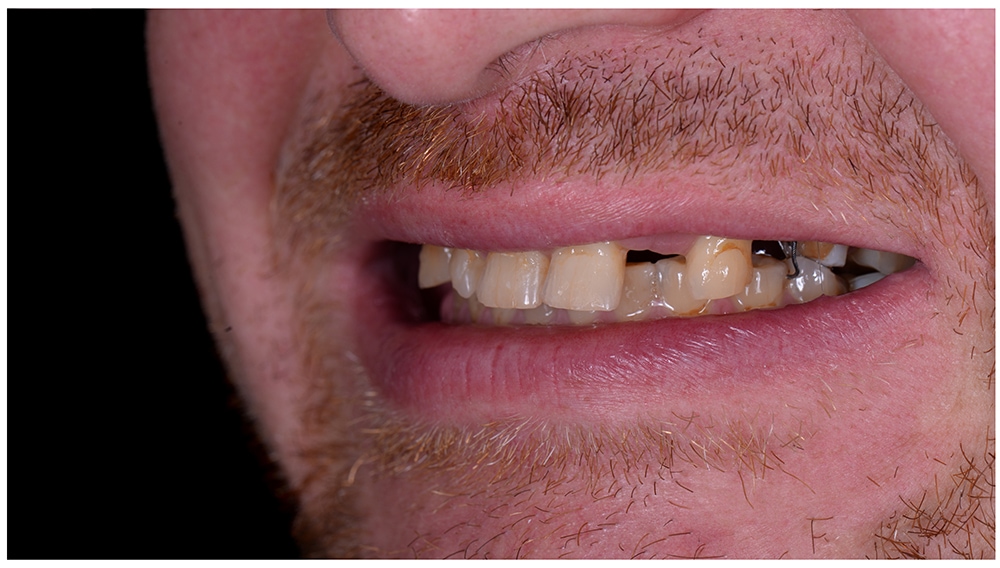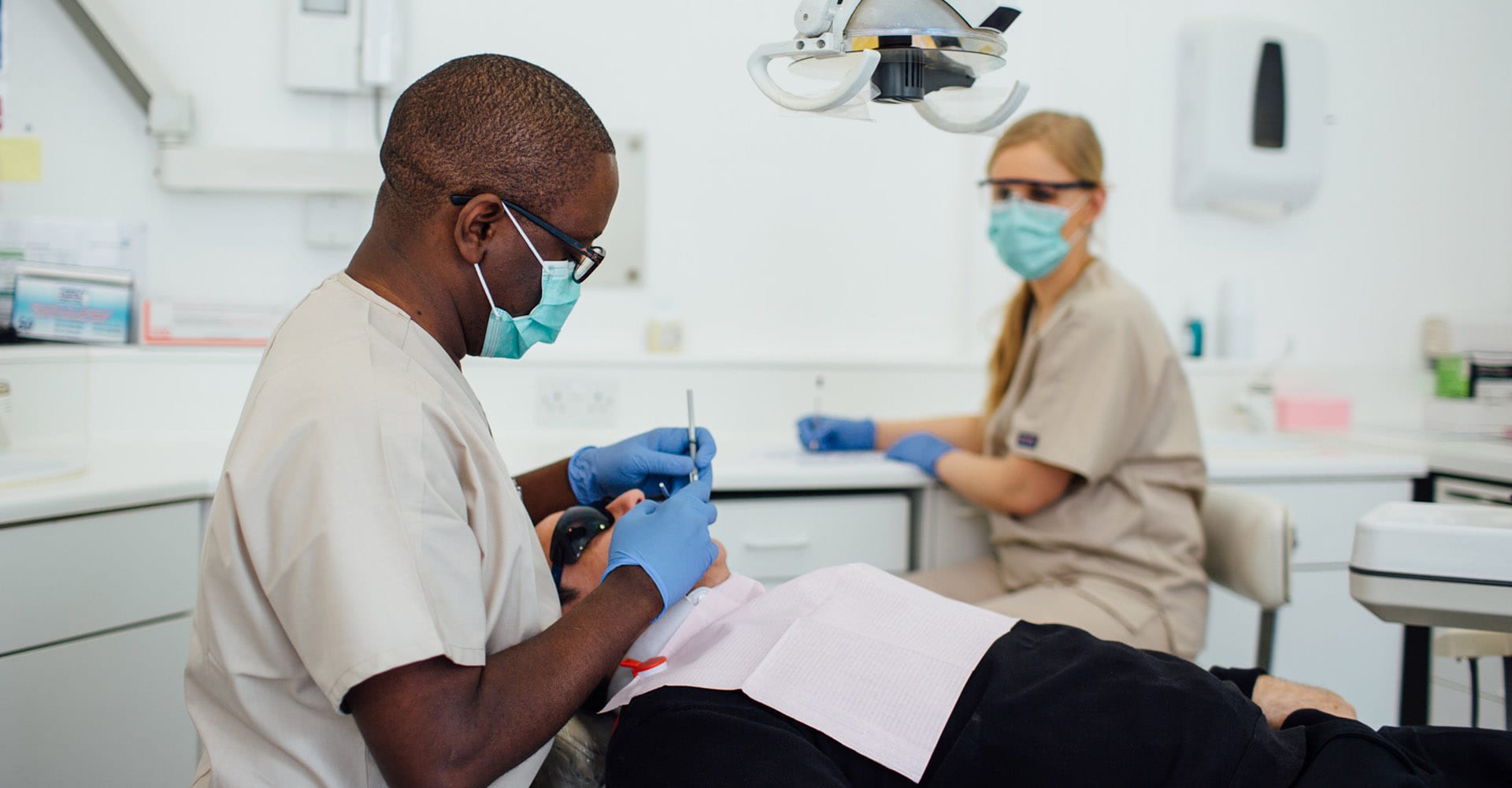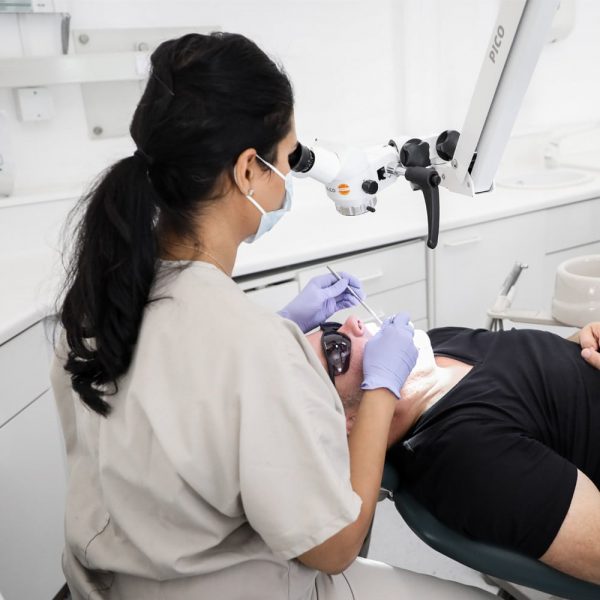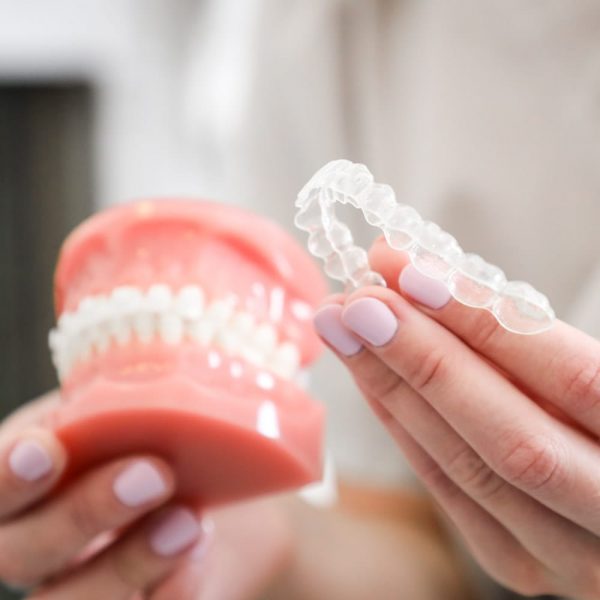Bone grafting for dental implants involves the use of bone tissue from various sources to aid in the healing and growth of damaged or diseased bones, has proven to be a game-changer in restorative dentistry.
However, the complexity of the procedure, coupled with potential risks and complications, calls for a profound understanding and meticulous approach towards patient assessment and post-operative care.
Key Takeaways about Dental Bone Graft
- Implant bone grafts are a surgical procedure used to augment bone volume in the jaw, preparing for dental implant placement or restorative procedures.
- They enhance the structural integrity of the jaw by harnessing the body's natural ability to regenerate bone tissue and serving as a scaffold for new bone growth.
- There are different types of implant grafts, including autografts (made from the patient's own bone), allografts (utilising bone from a different individual), synthetic variants, xenografts (sourced from a species other than human), and alloplastic grafts (made from materials like hydroxyapatite).
- Preparations for dental bone graft placement involve a comprehensive oral examination, detailed X-rays or scans, and careful planning to ensure patient reassurance and inclusion.
What is a dental bone augmentation?
Dental bone augmentation is a surgical procedure designed to augment the volume of bone in the jaw. It is typically done in preparation for dental implant placement or other dental restorative procedures. This specialised form of implant bone grafting is a significant part of the regenerative journey to reclaiming dental health after tooth loss or gum disease.
Dental bone grafts enhance the structural integrity of the jaw, providing a sturdy foundation for procedures like dental implant surgery. They can be sourced from the patient's own bone or from a cadaver, depending on specific needs and preferences.
How does a dental bone graft work?
A dental bone graft harnesses the body's natural ability to regenerate by serving as a scaffold for new bone tissue to grow, effectively repairing areas of bone loss in the jaw. This surgical procedure involves placing grafting material into the jawbone. Over time, the body replaces this material with its own bone, restoring the jaw's natural structure and strength.
Preparation: The dentist will first assess the extent of bone loss to determine the amount and type of grafting material needed.
Procedure: During the procedure, the dental bone graft is precisely placed to encourage bone regeneration.
Healing Process: The healing process can take several months, during which the bone graft material is gradually replaced with new bone tissue, creating a solid foundation for a dental implant.
Are there different types of bone grafts for dental implants?
Several types of dental bone grafts exits and it is important to note that each one is differentiated by their tissue source and composition.
Autografts, for instance, are made from bone harvested from the patient's own body, ideal for missing bone areas. This is usually required when very large volumes of bone are required and other materials are suitable for smaller volumes of bone.
Allografts is bone from a different individual to the recipient and are often employed in dental implants.
Synthetic variants, another type of graft, include hydrogel-hydroxyapatite composite and calcium phosphates.
Xenografts source bone from a species other than human (e.g. cows, pigs and horses), while alloplastic grafts are made from materials like hydroxyapatite.
Understanding these types of bone grafts and their unique properties allows us to appreciate the intricate process by which bone grafts are made, how they aid in restoring bone health and how to be sensitive to various cultures and religions.
What happens before dental bone graft placement?
Prior to the placement of dental bone grafts, a comprehensive oral examination and detailed X-rays or scans are performed to ascertain the extent of bone loss and determine the most suitable treatment approach.
Before undertaking the grafting, which is a surgical procedure, some factors are considered:
- Dental Implant Placement: The location and positioning of the implant may require a bone graft to ensure stability.
- Bone Graft Material: Depending on the patient's situation, different materials may be utilized for grafting.
- Timeline: The time frame for graft integration prior to dental implant placement is also considered.
This meticulous planning and preparation is done to foster an environment of reassurance and inclusion for our patients, ensuring they feel a part of this important journey to dental health.
What happens during dental bone graft surgery?
The dental bone graft surgery begins with the administration of local anaesthesia (and intravenous sedation if required). This is a surgical procedure that uses transplanted bone to repair areas where bone is missing or damaged.
An incision is made in the gums where the bone graft will be inserted. Once the graft is in place, the gum tissue is repositioned, and the incision is closed with stitches. From this point, the healing process begins.
| Steps during Surgery | Description |
| Anaesthesia/IV Sedative Administration | Ensures patient comfort |
| Insert the Bone Graft | Involves adding the graft material |
| Closure of Incision | The gums are repositioned and stitched |
It's crucial to understand this process for a sense of belonging and involvement in your dental health journey.
What happens after a dental bone graft?
After the completion of a dental bone graft, there are subsequent steps and considerations for the patient and surgeon. Successful healing pf a bone graft depends on meticulous adherence to post-operative instructions.
These instructions generally include:
- Taking prescribed pain relievers as directed to manage discomfort after the graft was placed.
- Regular reviews to monitor the graft integration with the existing bone structure.
- Successful healing is greatly enhanced by good oral hygiene and no cigarette smoking
Following these steps fosters a sense of belonging as patients actively participate in their healing process. The surgeon also plays a vital role in monitoring progress and making necessary adjustments to ensure the graft's success.
What are the risks or complications of dental bone grafts?
Potential complications may include pain, swelling, and bruising in the graft area. If the graft is taken from the hip, discomfort while walking may also occur. Infections are prevented with course of antibiotics. Another potential risk is that the graft may not be successful, requiring additional surgery.
| Risks or Complications | Description |
| Pain, Swelling, and Bruising | Common after the procedure |
| Discomfort While Walking | If graft is taken from the hip |
| Infection | Can be prevented with antibiotics |
| Insufficient Successful Bone | May require additional graft surgery |
Undergoing this procedure under general anaesthesia also carries its own risks, which should be discussed with your dentist.
How much does Dental Bone Grafting Cost?
Costs vary widely because there are so many different situations in which bone grafts will be required. The cheapest grafts will be approximately £350-£500 and are usually placed at the same time as the implant is placed. Bone grafts that have to be placed in advance of implant treatment e.g. autogenous bone described above OR sinus bone grafts cost £1500-£3500 because of the increased complexity.
Alternatives to Dental Bone Grafts
In cases where bone grafts are not a viable option, several alternatives can be explored. These alternatives include zygomatic and pterygoid implants, bridges, dentures, or even opting for no tooth replacement. Synthetic bone grafts provide the same function as natural bone grafting material without the need for grafting from the patient's body.
- Zygomatic and Pterygoid Implants: These are dental implants placed in the upper jaw, offering a stable and reliable alternative to traditional bone grafts.
- Bridges and Dentures: These alternatives can replace missing teeth without the need for grafting, but require maintenance.
- Synthetic Bone Grafts: A medical advancement in grafting, these are made from biocompatible substances that mimic the properties of natural bone.
These alternatives to bone grafts provide feasible solutions for those seeking dental restorations.

















